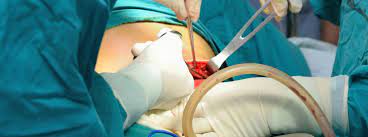A Laparoscopic Gynecologist in Kota specializes in diagnosing and treating various gynecological conditions using minimally invasive laparoscopic techniques. Here are some of the common conditions they can diagnose and treat:
1. Endometriosis
- Diagnosis: Laparoscopy is the gold standard for diagnosing endometriosis, a condition where tissue similar to the lining of the uterus grows outside the uterus.
- Treatment: Surgical removal of endometrial implants, adhesions, and cysts to relieve pain and improve fertility.
2. Uterine Fibroids
- Diagnosis: Laparoscopy can help in visualizing fibroids and assessing their size and location.
- Treatment: Myomectomy, a surgical procedure to remove fibroids while preserving the uterus, can be performed laparoscopically.
3. Ovarian Cysts
- Diagnosis: Laparoscopic Gynecologist in Kota allows direct visualization of ovarian cysts and helps differentiate between benign and malignant cysts.
- Treatment: Surgical removal of ovarian cysts (cystectomy) to relieve symptoms and prevent complications.
4. Pelvic Inflammatory Disease (PID)
- Diagnosis: Laparoscopy can be used to diagnose and assess the extent of PID, which is an infection of the female reproductive organs.
- Treatment: Removal of infected tissue and adhesions to alleviate symptoms and prevent further complications.
5. Ectopic Pregnancy
- Diagnosis: Laparoscopy is often used to diagnose ectopic pregnancy, where a fertilized egg implants outside the uterus, typically in a fallopian tube.
- Treatment: Surgical removal of the ectopic pregnancy to prevent life-threatening complications.
6. Pelvic Adhesions
- Diagnosis: Laparoscopy helps identify adhesions, which are bands of scar tissue that can cause pelvic pain and infertility.
- Treatment: Adhesiolysis, a procedure to cut and remove adhesions, can be performed laparoscopically.
7. Chronic Pelvic Pain
- Diagnosis: Laparoscopy is used to investigate the cause of chronic pelvic pain when other diagnostic methods are inconclusive.
- Treatment: Depending on the underlying cause, treatment may include removal of endometrial implants, fibroids, or adhesions.
8. Infertility
- Diagnosis: Laparoscopy can help diagnose conditions contributing to infertility, such as blocked fallopian tubes, endometriosis, or pelvic adhesions.
- Treatment: Surgical interventions to improve fertility by addressing the identified issues.
9. Hysterectomy
- Diagnosis: Indications for hysterectomy (removal of the uterus) include fibroids, endometriosis, uterine prolapse, or cancer.
- Treatment: Laparoscopic hysterectomy is a minimally invasive option for removing the uterus.
10. Uterine Prolapse
- Diagnosis: Laparoscopy helps evaluate the extent of uterine prolapse, where the uterus descends into or outside the vaginal canal.
- Treatment: Laparoscopic procedures to repair and support pelvic structures, such as sacrocolpopexy.
Benefits of Laparoscopic Treatment
- Minimally Invasive: Smaller incisions result in less pain, reduced scarring, and quicker recovery times compared to open surgery.
- Shorter Hospital Stay: Patients typically experience shorter hospital stays and faster returns to normal activities.
- Reduced Risk of Complications: Lower risk of infection and complications due to minimally invasive nature.
Conclusion
A Laparoscopic Gynecologist in Kota is equipped to diagnose and treat a wide range of gynecological conditions using advanced laparoscopic techniques. These minimally invasive procedures offer numerous benefits, making them a preferred choice for many patients. If you are experiencing symptoms related to any of these conditions, consulting with a laparoscopic gynecologist can help determine the best course of action for diagnosis and treatment.





Comments